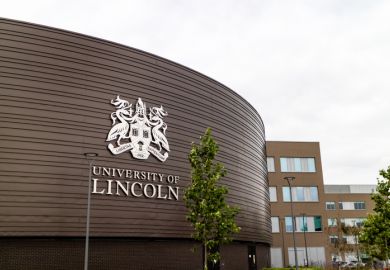What is the main threat to the system of higher education funding in England? The mistaken belief that somehow it is “unsustainable”. It would be a tragedy if this misunderstanding ever led to the abandonment of what is a fundamentally sound model.
Faced with the challenge of paying for English higher education, all three of the main political parties have opted for a graduate repayment scheme, with repayments deducted through the income tax system at a rate of 9 per cent of earnings above a threshold. This brings a significant element of private payment for higher education. But there is also substantial public support for higher education through funding for higher cost subjects, for disadvantaged students, for capital investment and for student maintenance grants. This continuing public support for higher education is deliberate and significant. It reflects the mix of private and public benefits from higher education.
There will also be a public spending cost in 30 years or more when some graduates have not fully repaid their loans and the balance has to be written off. Nobody can know what these write-offs will be. But the Department for Business, Innovation and Skills estimates and re-estimates this sum and identifies it as part of the departmental accounting process. These speculative calculations, made with heroic assumptions about future earnings and future policy, are the so-called RAB charge, or the resource accounting and budgeting charge. One of the more esoteric corners of public finance, this has become just about the most controversial aspect of the scheme. Yet the debate on RAB has been misleading. Let me attempt to clear up some of the confusion.
Loans to students are not public spending because loan outlay is matched with an obligation that the loan be paid back. The government can count as public expenditure the part of the loan that is written off only when it actually happens, but BIS estimates future write-offs so that they can be monitored by the Treasury, which needs to ensure that departments do not blithely make loans without worrying about getting the money back. These estimates do not feed through into the national accounts, ie, the overall Treasury arithmetic measuring actual public spending. It is common sense to treat as public spending the write-off when it actually happens and not before.
The government does, however, have to borrow money now to make the loans to students. Although this is not regarded as adding to net borrowing (because of the obligation to repay the loan), it does add to net government debt because the asset that the government acquires (the loan) is not regarded as sufficiently liquid to count as a financial asset according to rigorous financial rules. That is why selling student loans reduces net government debt. Those are the accounting rules. They are not fixed by the government; the government just complies with international conventions on public accounting.
The RAB charge is calculated using a peculiar mix of fixed assumptions and other figures that are highly sensitive to new data. A key part of the overall cost of the scheme is how much it costs the government to raise the funds in the first place – this is the interest rate the government pays on its borrowing. The actual real cost to the government of borrowing money now for 30 years is currently about 1 per cent. But the calculation of the RAB charge does not use that figure. Instead it is assumed to be much higher: the retail price index plus 2.2 per cent. This makes money appear more expensive than it really is and pushes up the apparent cost of writing off loans in the future. The previous Labour government reduced the estimated RAB charge on its loans from 42 per cent to 33 per cent by reducing its assumption for the cost of government borrowing from 3.5 per cent to 2.2 per cent. A further 1 percentage point reduction would reduce the estimated RAB charge by 10 percentage points. Of course interest rates will rise at some point, but an interest rate assumption that slowly adjusts down or up to match actual rates on indexed gilts would make more sense.
To make a forecast you also have to make assumptions about what the distribution of graduate earnings will be more than 30 years after someone entered university. A person who spends parts of their career earning little and others earning a lot is likely to pay back at least some of their student loan. However, graduates can get stuck in either high or low earning patterns, the latter reducing total repayments. These issues are inherently uncertain and debatable: they are not the same as facts about public spending this year.
The guide to terms and conditions that the student receives when they take out the loan states: “The regulations may change from time to time and this means the terms of your loan may also change.” But the RAB calculation assumes that the details of the scheme are fixed until 2046. In particular, the value of the £21,000 repayment threshold is assumed to be indefinitely fixed relative to earnings at whatever level it is at in 2016, when graduates begin to repay loans under the new system.
When the government decided the rules for the new system in 2010, it wanted to reduce graduates’ monthly repayments, so the repayment threshold was increased. Under the previous Labour government scheme, it was initially set at £15,000, where it stayed for five years. The coalition announced that the first graduates under the new scheme would start repaying when their earnings were above a threshold of £21,000. When it was fixed in November 2010, the proposed £21,000 threshold represented about 75 per cent of projected annual average earnings of £28,000 in 2016. Since then, however, earnings have not grown as rapidly as the Office for Budget Responsibility forecast, and they are now expected to be more like £26,000. This means that the £21,000 threshold has in effect risen to about 80 per cent of projected earnings. The threshold is assumed, for the purposes of estimating the RAB, to stay at this higher level relative to earnings for the next 30 years. (The repayment threshold would have to be about £19,500 today to have the same value relative to average earnings as was expected in 2010.)
So the RAB calculation assumes that the path of earnings and pay inflation up to 2016 will determine the repayment profile of our higher education system until the middle of the century. The forecasts, in effect, assume that income tax rates and allowances have been determined for the next 30 years. Every six months, new information on what has actually happened to earnings is used to give a new forecast of the state of the public accounts in the middle of the century.

Another peculiarity of the method for calculating the RAB charge is that the model is very sensitive to changes in earnings, such as the low growth of earnings seen in the past few years, while being completely insensitive to the fall in interest rates that has accompanied this. In the real economy, a slowdown tends to mean both lower wages and lower interest rates, but the RAB model ignores this. These are the kinds of factors that led estimates for the RAB charge to rise from 28 per cent to 46 per cent between 2013 and 2014.
One of the advantages of the current model for financing higher education is that it is flexible: it can be adjusted to reflect different balances of private and public benefits. There can be different views on the appropriate balance of funding between taxpayers and graduates, and the current structure can be calibrated in many different ways to give a different balance of payment. We do not need to abolish it and put in a new structure if we want a different balance. This allows governments to respond to fiscal pressures and changes in political opinion. Yet because RAB charge estimates assume that the parameters are fixed to 2046, the structure of the system appears far more inflexible than it really is. No policymaker would make a commitment for 30 years in this or any other area of public policy. When the critics say that the scheme is “unsustainable”, they are taking these rather peculiar forecasts of the RAB charge and assuming that the next 30 years are fixed and will comply with today’s forecast. But life is not like that.
So how should the system evolve? What we need now is a framework explicitly designed to allow adjustments to the parameters of the system in order to keep it flexible and sustainable while maintaining its basic structure. Such a framework should also avoid endless ad hoc adjustments. I therefore suggest that at the start of each Parliament the government should assess the latest evidence on the costs and benefits of education and set the key figures – such as the formula for increasing the fee loan and the repayment threshold – for the graduate contribution scheme. This could be done within government, by an outside panel of experts and interested parties or by some combination of the two. This is emphatically not a review of the whole system. It is not a Robbins or a Dearing or a Browne. Its purpose is not to change the structure of higher education funding. Instead the aim is to calibrate the structure in the light of new evidence and any change in political views on the right balance to strike.
This exercise could happen alongside the government’s public expenditure decisions or follow on from them after a spending envelope has been fixed. The aim would be to operate the graduate contribution scheme on a stable basis five years at a time. Universities used to be funded with a five-year allocation of funding – this was thought to be the right way to finance autonomous institutions that needed to plan for the long term. That collapsed in the 1970s under the combined weight of high inflation and public spending crises. It would be great to bring it back.
This review could also involve an up-to-date assessment of the costs of higher education – both for universities and for students. This would be the basis for deciding whether the £9,000 tuition fee should be up-rated by inflation, for example. The £9,000 fee cannot be frozen indefinitely. However, the universities have not won public support for a rise because it is still far too difficult to get a clear picture of how the money is spent. Universities could argue that they need more money to invest in improving the quality of the student experience. But to do this they would have to provide clear evidence of exactly how their current fee income is being spent and undertake to publish clearer accounts of where the money goes, along the lines of the reports that local authorities now produce. And they would need to show what they were doing to focus on high-quality teaching.
It would also be possible to look at the living costs facing students. In my experience, undergraduates are far more worried about the cash they need to live on now than about repaying through PAYE at a rate of 9 per cent of their earnings above a high threshold. There is a case for an increase in their total maintenance support so that they have more cash to live on. But there could also be a substantial shift from maintenance grant to loans so that there is also a saving in public spending.
These exercises should also include an assessment of what would be a reasonable amount to expect graduates to repay and at what point. The repayment threshold has ended up much higher relative to actual earnings than was ever intended. This long, slow, small repayment model does not even seem to be particularly popular. The government could decide to freeze the £21,000 threshold for this Parliament. For graduates of the old (pre-2012) system, the government could continue to up-rate Labour’s £15,000 threshold. By the time of the next five-year review, the latter threshold would be very close to £21,000. What to do then would be an obvious question for a quinquennial review launched towards the end of this Parliament.
Finally, the government should shift to a more sensible discount rate for RAB charge calculations linked to the actual cost of borrowing as shown in index-linked gilts.
This package would save public spending by a further shift from maintenance grant to loans. It would put more cash in the hands of students and protect resources for universities. The Institute for Fiscal Studies estimates that the freezing of the repayment threshold together with correcting the discount rate would reduce the RAB charge to about 15 per cent. Together with the structure of future quinquennial reviews, these measures would put an end to a sterile and confused debate about the RAB charge by showing that England’s model of higher education funding is flexible and sustainable.
David Willetts is a visiting professor at King’s College London. He was minister for universities and science from 2010 to 2014. This article is based on a paper titled “Issues and ideas on higher education: Who benefits? Who pays?”, part of a series of policy pamphlets published by the Policy Institute at King’s that aims to stimulate debate on contemporary, and often controversial, policy issues.
POSTSCRIPT:
Article originally published as: It’s a winning formula, just adjust the variables (18 June 2015)
Register to continue
Why register?
- Registration is free and only takes a moment
- Once registered, you can read 3 articles a month
- Sign up for our newsletter
Subscribe
Or subscribe for unlimited access to:
- Unlimited access to news, views, insights & reviews
- Digital editions
- Digital access to THE’s university and college rankings analysis
Already registered or a current subscriber? Login




